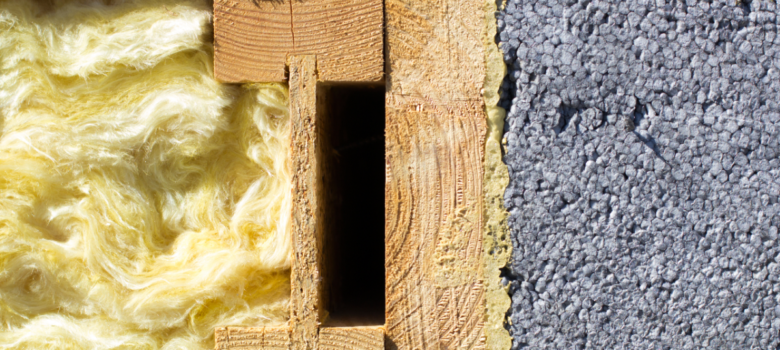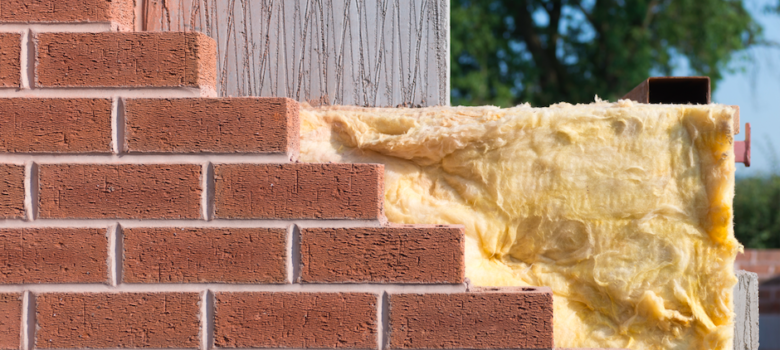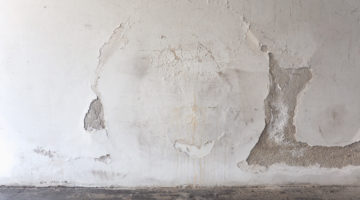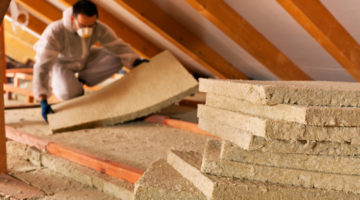
Most cavity wall insulation is perfectly safe – but it depends on the material used, and the quality of the workmanship. Modern retrofit cavity wall insulation methods pose no threat to those living in the home, but if your walls were insulated decades ago, you may want to check what was used. Similarly, if your cavity walls were wrongly insulated, this could cause you problems down the line.
Urea formaldehyde foam insulation
In the 1970s and ’80s, there was a rush to insulate thousands of homes as quickly and cheaply as possible – and this saw the widespread use of formaldehyde foam insulation, sprayed into cavity walls. In some cases, it was an effective insulant, and it wasn’t until later that people noticed the issues it caused.
Once inside the cavity, this foam shrinks as it cures, leaving air gaps in the walls which encourage cold bridging. But urea formaldehyde has been blamed for more sinister problems too. When urea formaldehyde decomposes over time, it creates chemical fumes. There is evidence that exposure to high levels of airborne formaldehyde can lead to respiratory problems and other health issues. If you’re worried that your home may have been insulated with it, it’s best to get a professional to take a look. If you don’t have the paperwork, they will be able to check with a boroscope inspection to see whether or not it’s this type of insulation, and can also measure the levels of formaldehyde in the air to see if they are potentially dangerous. You then have the option of removing the insulation and replacing it with a new material.
Blown fibreglass insulation
Another material that was once commonly used to insulate cavity walls is fibreglass. This is injected into the cavity, where it settles and compacts. Although it has no health effects when fully sealed within the cavity, if it escapes through gaps it can be a bit of a nightmare. Although blown fibreglass insulation isn’t classed as hazardous, it is an irritant – if it escapes, it can really itch your eyes and skin.
Another issue is that fibreglass insulation has often been installed in properties where it was unsuitable, or it was rushed. Once rainwater gets into the cavity, it saturates the fibreglass. This water can then track across into internal walls and present as damp. Aside from wet fibreglass being absolutely no use as an insulator, damp and mould can have serious health implications. Again, if you think this is an issue in your property, it’s wise to take it out and start again. We can recommend people we trust to do this for you. Bear in mind that if you’re removing/exposing blown fibre insulation, you have a responsibility to make sure it doesn’t escape and cause problems for your neighbours!
New cavity wall insulation
If you’re installing cavity wall insulation, it’s worth opting for a modern insulating material with proven performance! EPS (expanded polystyrene beads) and polyurethane foam are the most commonly used these days, and with good reason. Neither have health implications, and they are waterproof, so should be as effective in decades’ time as they are now. Always ask for an explanation of the insulation material your installer is using if there’s anything you’re not sure about.
Installing cavity wall insulation
Need cavity wall insulation? We have scoured the country for the best installers, so that we can make sure we only recommend those we really trust.
If you would like us to find you a local insulation installer, just fill in the form below and we will be in touch shortly!












Good article.
My walls were filled with Urea Formaldehyd in 1987
I should like to check the levels in the air
Can you help me ?
We have lived in our house for over 30 years (it is 45 years old). One of our bedrooms started smelling about 4 years ago – it is a plastic type smell which is worse when the sun comes into the room and door shut. We have taken up the carpet and stripped the wallpaper off, but the smell persists. There is nothing under the floorboards, as my husband has taken them up and inspected cabling and pipework underneath. However, we mounted some children’s units on two of the walls for safety reasons,when our grandson came to stay, but they were removed some time back, and I am wondering if the smell could be coming from the cavity wall where the holes were drilled as an extension was built against one of the walls (outside wall therefore) where the holes were drilled in)?